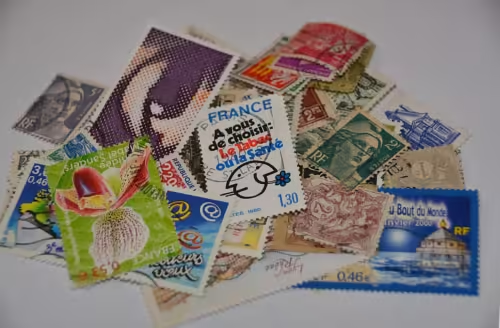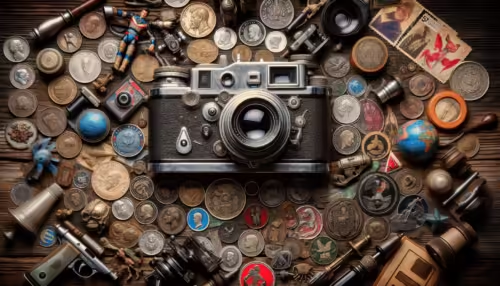Have you ever wondered why individuals find immense joy in chasing after, acquiring, and amassing a collection of specific items? Whether it be stamps, coins, or something more peculiar, collecting is an activity that bridges generations and cultural divides. But exactly what do people collect the most, and why does it captivate them so?

This image is property of pixabay.com.
Table of Contents
Overview and Importance of Collecting
Collecting is an age-old pastime, enriching lives and connecting people across time and space. From the Victorian era of collecting rare taxidermy and botanical samples to today’s digital asset collections like NFTs, the pursuit remains a captivating avenue for personal fulfillment and intellectual challenge. In our interconnected era, collecting serves as both an investment strategy and a way to establish a personal narrative, creating a sense of continuity in a fragmented world. This article ventures into the core of why collecting remains popular, despite its sometimes obsessive traits, with a firm grounding in factual detail.
Historical Context of Collecting
Delving into the annals of history reveals the notoriety and reverence attached to collecting. Dating back to ancient civilizations, the creation of libraries by Ptolemy in Alexandria set a precedent. He amassed scrolls for the pursuit of knowledge and shared cultural wisdom. Objects later became the center of curiosity cabinets during the Renaissance, which were private collections of notable items. The concept has evolved to accommodate not only the physical but unique spiritual and emotional wealth.
Fast-forward to the post-war era, when economic prosperity allowed more individuals to indulge in collecting hobbies. The surplus income and increased leisure time encouraged people to seek personalized collections as reflections of individual identity and cultural engagement. Collecting boasts historical connections to both economic ability and cultural currents, emerging as a staple in societies worldwide.
Current Trends in Collecting
The landscape of collecting in modern times has certainly shifted. Although traditional collections such as stamps and coins remain steadfastly popular, new trends have arisen with the advancement of technology and changing societal interests. The following examples highlight some of the most sought-after categories in recent years:
Art and Memorabilia: With pieces ranging from vintage posters to Picasso’s paintings, collecting art remains a luxurious and profound statement of taste and investment potential. Sports memorabilia, in particular, has become a collector’s delight, with historical significance often tied to cultural identity, particularly in regions with avid sports followings.
Digital Collections: The digital age has brought new opportunities. Crypto art and NFTs represent a cutting-edge industry offering digital scarcity, driving collectors passionate about blockchain technology and digital validation.
Vintage Toys and Comic Books: The nostalgia factor plays significantly here, emboldening demand through rich storytelling and cultural icons that resonate across generations.
Exploring the Motivations Behind Collecting
Understanding the psychological allure of collecting is critical when decoding its enchantment. Collecting can symbolize control, creativity, and personal expression. It’s both a sanctuary and a pursuit, affording the collector a realm entirely their own. Consider how Hollywood has romanticized and vilified this practice with exaggerated portrayals of the obsessive collector as a story arc for both drama and humor.
Control and Chaos
Collections can act as a bulwark against the unpredictabilities of life. For some, they establish a sense of dominion over a specific aspect of reality. By controlling the boundaries of one’s collection, individuals create order in a world that often feels random and unpredictable.
Nostalgia and Memory
Objects often serve as tangible links to the past, each piece a conduit to personal and shared histories. The act of collecting intertwines with nostalgia, offering comfort and familiarity by recreating or preserving memories from different life stages.
Social Connections and Community
Collectors often find kinship in their pursuits, forming tightly-knit communities centered on shared interests. Whether through swap meets, conventions, or online forums, collectors experience an enthusiastic exchange of knowledge, bartering, and camaraderie.
Pursuit of Knowledge
Some collections begin as a quest for understanding. Allured by the learning opportunity, individuals study comprehensive details about the items of interest—from historical significance to manufacturing processes. This investment cultivates a broadly informed perspective.

This image is property of pixabay.com.
Case Studies in Collecting
To contextualize the diverse nature of collecting, let us examine specific instances that reveal both the charm and intricacy involved:
Example 1: The Philatelist’s Journey
Consider the case of John Doe, a seasoned philatelist who began collecting stamps as a child. His collection—spanning several continents and historic epochs—presents a patchwork of personal narrative and global history. Each stamp in his trove is a portal to deeper inquiry, from Queen Victoria’s reign to the propaganda of World War II. John’s dedication exemplifies collecting as a conduit for learning and introspection, reinforcing the connection between object and observer.
Example 2: Comic Books as Cultural Treasure
Martha Smith’s collection of Golden Age comic books is not only valuable monetarily but culturally. Titles from the 1940s and 50s offer insight into societal values and transformations, particularly regarding the emergence of superhero archetypes. Her collection, cherished for both captivating storytelling and historical immersion, demonstrates how comics have surged from mere entertainment to quintessential collectible items.
Comparing Perspectives on Collecting
While most individuals find joy and purpose in their collecting pursuits, perspectives on its worthiness can differ significantly. Below is a table comparing various viewpoints:
| Perspective | Supportive Points | Opposing Points |
|---|---|---|
| Collecting as Investment | Assets may appreciate in value over time | Requires expertise to discern truly valuable items |
| Collecting for Knowledge | Broadens understanding of diverse subjects | Can become overwhelming when too much data is accrued |
| Social Collecting | Facilitates community and shared interests | May detract from non-collecting relationships |
| Memory Preservation | Strengthens connection to personal history and ancestry | Nostalgia can sometimes hinder living in the present |
Impact Assessment
The evidence suggests that collecting can significantly contribute to personal and cultural wealth, enhancing lives with knowledge, relationships, and heritage preservation. However, nuance is necessary—especially considering potential pitfalls like hoarding or financial overspending. Being well-informed helps mitigate those risks, allowing collecting to remain enriching without descending into compulsion.

This image is property of pixabay.com.
Future Directions of Collecting
As society leans further into technological advances, the future of collecting is poised for transformation. Digital spaces will likely continue expanding in prominence. However, they will coalesce with physical collections, as people navigate both realms to acquire and curate items that reflect their multifaceted identities.
Predictions and Implications
In light of emerging technologies, AI may further influence and predict collecting trends—facilitating collectors to anticipate what will gain or lose value. This tangential industry would see vast application, requiring both tech-savvy skill sets and traditional expertise in the curated objects. The convergence of artificial intelligence with personal passion offers boundless potential for the industry.
The implications of this evolution will ripple through associated areas: museums, auction houses, and cultural institutions adapting to hybrid models, melding real-world exhibition with virtual engagement.
Conclusion
To summarize, the art and science of collecting—grounded in history, enriched by its evolution, and enduringly multifaceted—testifies to humanity’s eternal penchant for curating worlds within worlds. Whether pursued as an investment strategy, knowledge repository, or simply a source of personal joy, collections personify individual narratives while connecting collectors to wider societies and cultural epochs. The ability to derive meaning and fulfillment from these pursuits aligns them seamlessly into human experience, revealing much about our enduring desire to claim, know, and cherish.
Engage with these narratives by considering what it is you might collect, whether physical or digital, and reflect on how it relates to your own journey. What story would your collection tell?


